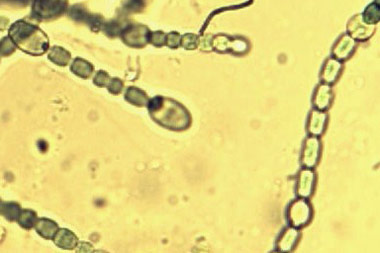 Alpha Analytical is now identifying and enumerating water matrices for algae speciation using various forms of microscopy.
Alpha Analytical is now identifying and enumerating water matrices for algae speciation using various forms of microscopy.
The identification and enumeration of algae in lakes and other freshwater ecosystems provides a simple, reliable, and cost-effective measure of water quality. As the major primary producers in aquatic ecosystems, algae play an important role in energy flow and nutrient cycling. Algal blooms may indicate excessive nutrient loading, pollution, or other environmental problems. Determination of the numbers and types of algae present in a water body is useful in environmental monitoring programs and impairment assessments, because these characteristics respond quickly to changes in water chemistry. Because of their short life cycle, changes in water quality are often reflected by changes in the algal community within a few days or weeks.
In addition to their value in biological monitoring programs, some algae can become problematic. Excessive algal growth can cause a number of water-quality problems, including: bad taste and odor, de-oxygenation of water, and fish kills. Some blooms are toxic to wildlife and humans. Clogged pipes, filters, or screens in water and wastewater treatment plants are other problems caused by excessive algal growth, resulting in increased costs to water utilities and municipalities. Correct identification of target species is critical when determining a management strategy.